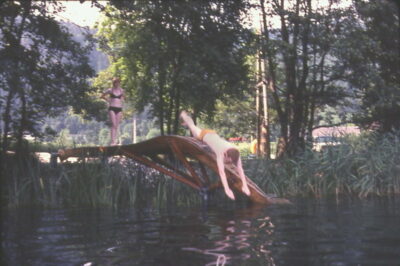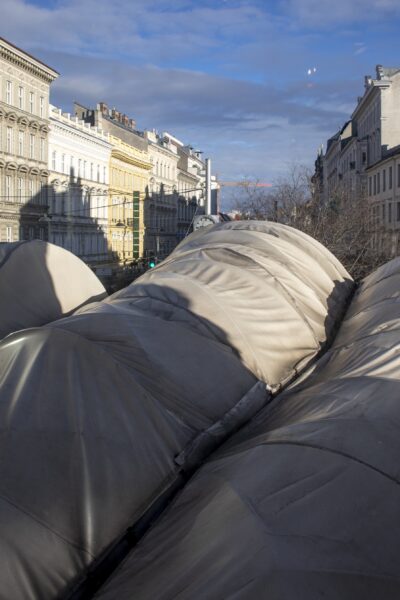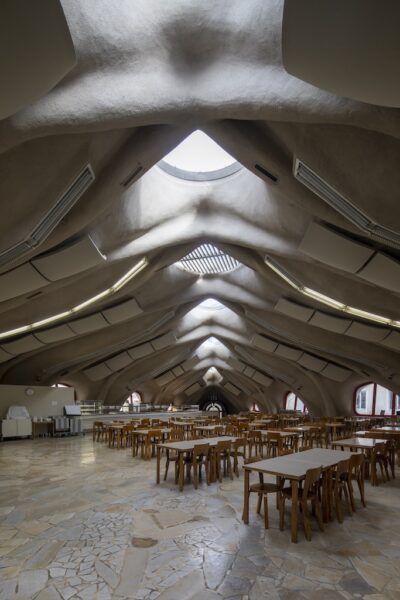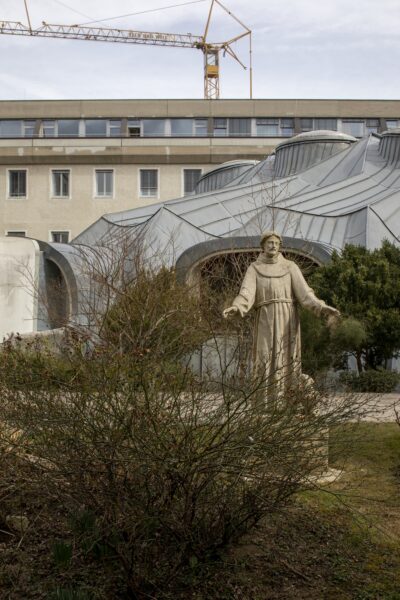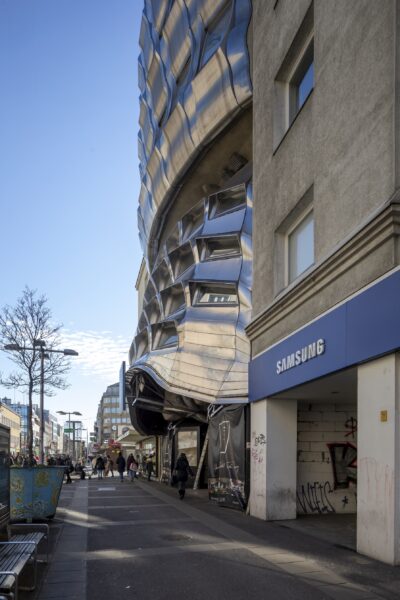Zentralsparkasse, Wien, 1976–1979
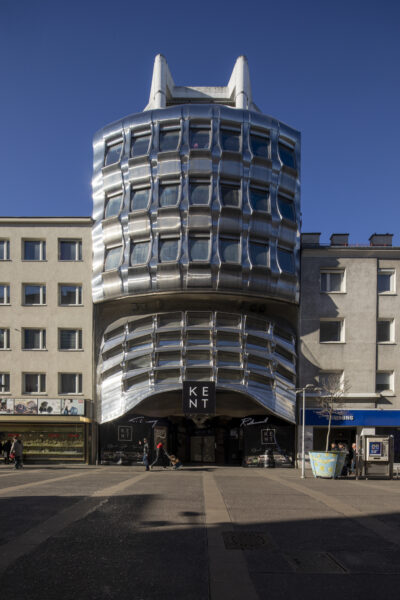
In Günther Domenig’s work, there is an inextricably close relationship between physicality and utopia, which overlap in many projects and feed off each other. One is reflected in the other. Sketches of the Z‑Sparkasse in Vienna, for example, are reminiscent of the skeleton of a strange vertebrate creature, while the organic structure of the interior of the multi-purpose hall at the School Sisters in Graz-Eggenberg recalls a uterus.
Paws and fingers protrude from the buildings, sometimes subtly, sometimes clearly extending into the space. The hand as a representative of genuine creation – very present in Günther Domenig’s drawing work – becomes a defining architectural feature. Both the Z‑Sparkasse complex and the conversions of the Humanic branches (especially in Vienna), but also the Steinhaus itself are determined by this motif; they seem to want to step out of the row of surrounding architecture or appropriate the space through the gesture of “grasping”.
Many of Domenig’s buildings have a subtle recalcitrance that is difficult to put into words. Some seem to go against their intended function, others against the plans of the clients or the wishes of the users: actors refused to rehearse on their rehearsal stage. The institutes
of the Faculty of Architecture in Graz – apart from Domenig’s own – will never move into the building planned for them. The former bank branch became a suitcase shop, then vacant. It is uncleanable, the owner once remarked in an aside. One might think that these buildings are “useless”. But a closer look reveals how they soak up their environment and change it. Almost as if they were living organisms. They do not only fulfil a function, they also have a life of their own that forces us to rethink our notions of usability and function.

